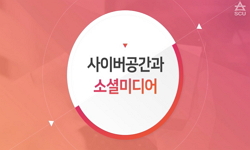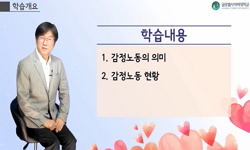This study investigates how the users’ perceptions on like function in social media affect their attitudes toward the number of likes they receive from others. People conveniently believe that the number of likes is a significant measure of their on...
http://chineseinput.net/에서 pinyin(병음)방식으로 중국어를 변환할 수 있습니다.
변환된 중국어를 복사하여 사용하시면 됩니다.
- 中文 을 입력하시려면 zhongwen을 입력하시고 space를누르시면됩니다.
- 北京 을 입력하시려면 beijing을 입력하시고 space를 누르시면 됩니다.

No “Like” is Fine : Resolving Self-Contradiction in Social Media Attitudes by Flipping Cognition-Emotion Dynamics
한글로보기부가정보
다국어 초록 (Multilingual Abstract)
This study investigates how the users’ perceptions on like function in social media affect their attitudes toward the number of likes they receive from others. People conveniently believe that the number of likes is a significant measure of their online content quality and popularity. However, we take an ambivalent view that people do not settle their perceptions on the likes but change their like assessments according to circumstances. Specifically, we propose a model wherein emotional responses to the received likes may affect the value assessment of the likes. Our model shows how people resolve their internal contradiction on the value of the likes by flipping the traditional cognition-to-emotion mechanism to emotion-to-cognition mechanism. We validate the reversed dynamics between judgements and feelings using the data collected from 548 social media users. Results confirm that social media users’ attitudes toward likes is largely affected by their emotional responses to their received number of likes. The implications of this study explain social media users’ ambivalent attitudes toward likes by showing how they adjust their individual like valuation using their emotional responses.
참고문헌 (Reference)
1 Krasnova, H., "Why men and women continue to use social networking sites : The role of gender differences" 26 (26): 261-284, 2017
2 Nelson-Field, K., "What's not to “like?”: Can a facebook fan base give a brand the advertising reach it needs?" 52 (52): 262-269, 2012
3 Scissors, L., "What's in a like? Attitudes and behaviors around receiving likes on Facebook" 2016
4 Lee, S. Y., "What makes us click"like"on Facebook? Examining psychological, technological, and motivational factors on virtual endorsement" 73 : 332-341, 2016
5 Jung, Y. H., "Understanding the role of sense of presence and perceived autonomy in users'continued use of social virtual worlds" 16 (16): 492-510, 2011
6 Lin, X., "Understanding factors affecting users’ social networking site continuance : A gender difference perspective" 54 (54): 383-395, 2017
7 Kim, Y. A., "Trust, distrust and lack of confidence of users in online social media-sharing communities" 37 : 438-450, 2013
8 Blease, C. R., "Too many ‘friends, ’ too few ‘likes’? Evolutionary psychology and ‘Facebook depression’" 19 (19): 1-13, 2015
9 Kahneman, D., "Thinking, Fast and Slow" Macmillan 2011
10 Lipsman, A., "The power of “like”: How brands reach (and influence) fans through social-media marketing" 52 (52): 40-52, 2012
1 Krasnova, H., "Why men and women continue to use social networking sites : The role of gender differences" 26 (26): 261-284, 2017
2 Nelson-Field, K., "What's not to “like?”: Can a facebook fan base give a brand the advertising reach it needs?" 52 (52): 262-269, 2012
3 Scissors, L., "What's in a like? Attitudes and behaviors around receiving likes on Facebook" 2016
4 Lee, S. Y., "What makes us click"like"on Facebook? Examining psychological, technological, and motivational factors on virtual endorsement" 73 : 332-341, 2016
5 Jung, Y. H., "Understanding the role of sense of presence and perceived autonomy in users'continued use of social virtual worlds" 16 (16): 492-510, 2011
6 Lin, X., "Understanding factors affecting users’ social networking site continuance : A gender difference perspective" 54 (54): 383-395, 2017
7 Kim, Y. A., "Trust, distrust and lack of confidence of users in online social media-sharing communities" 37 : 438-450, 2013
8 Blease, C. R., "Too many ‘friends, ’ too few ‘likes’? Evolutionary psychology and ‘Facebook depression’" 19 (19): 1-13, 2015
9 Kahneman, D., "Thinking, Fast and Slow" Macmillan 2011
10 Lipsman, A., "The power of “like”: How brands reach (and influence) fans through social-media marketing" 52 (52): 40-52, 2012
11 Thong, J. Y. L., "The effects of post-adoption beliefs on the expectation-confirmation model for information technology continuance" 64 (64): 799-810, 2006
12 Morrow Jr, J. L., "The cognitive and affective antecedents of general trust within cooperative organizations" 16 (16): 48-64, 2004
13 이정, "The Relationship between Online Trust and Distrust in Business: Testing Mutual Causality from a Cognitive-Affective Personality System Theory" 한국경영정보학회 25 (25): 500-518, 2015
14 Chen, B., "Students’ self-presentation on Facebook : An examination of personality and self-construal factors" 28 (28): 2091-2099, 2012
15 Hermida, A., "Share, like, recommend : Decoding the social media news consumer" 13 (13): 815-824, 2012
16 Homburg, C., "Responsiveness to customers and competitors : The role of affective and cognitive organizational systems" 71 (71): 18-38, 2007
17 Nunnally, J. C., "Psychometric Theory" McGraw-Hill 1994
18 Cyr, D. M., "Perceived interactivity leading to e-loyalty : Development of a model for cognitive-affective user responses" 67 (67): 850-869, 2009
19 Bagozzi, R. P., "On the evaluation of structural equation models" 16 (16): 74-94, 1988
20 Haferkamp, N., "Men are from Mars, women are from Venus? Examining gender differences in self-presentation on social networking sites" 15 (15): 91-98, 2012
21 Dumas, T. M., "Lying or longing for likes? Narcissism, peer belonging, loneliness and normative versus deceptive like-seeking on Instagram in emerging adulthood" 71 : 1-10, 2017
22 Kim, C., "Like, comment, and share on Facebook : How each behavior differs from the other" 43 (43): 441-449, 2017
23 Tifferet, S., "Gender differences in privacy tendencies on social network sites : A meta-analysis" 93 : 1-12, 2019
24 Chua, R. Y. J., "From the head and the heart : Locating cognition and affect-based trust in managers’ professional networks" 51 (51): 436-452, 2008
25 Chua, T., "Follow me and like my beautiful selfies : Singapore teenage girls’ engagement in self-presentation and peer comparison on social media" 55 : 190-197, 2016
26 Jeong, M., "Feeling displeasure from online social media postings : A study using cognitive dissonance theory" 97 : 231-240, 2019
27 Chin, C. Y., "Facebook users' motivation for clicking the “like” button" 43 (43): 579-592, 2015
28 Phua, J., "Explicating the ‘like’on Facebook brand pages : The effect of intensity of Facebook use, number of overall ‘likes’, and number of friends' ‘likes’ on consumers' brand outcomes" 22 (22): 544-559, 2016
29 Fornell, C., "Evaluating structural equation models with unobservable variables and measurement error" 18 (18): 39-50, 1981
30 Beukeboom, C. J., "Does a virtual like cause actual liking? How following a brand's Facebook updates enhances brand evaluations and purchase intention" 32 : 26-36, 2015
31 McKnight, D. H., "Dispositional trust and distrust distinctions in predicting high-and low-risk internet expert advice site perceptions" 3 (3): 35-58, 2004
32 Podsakoff, P. M., "Common method biases in behavioral research : A critical review of the literature and recommended remedies" 88 (88): 879-903, 2003
33 Mischel, W., "Cognitive-affective system theory of personality : Reconceptualizing situations, dispositions, dynamics, and invariance in personality structure" 102 : 246-268, 1995
34 Harmon-Jones, E., "Cognitive dissonance: Reexamining a pivotal theory in psychology" American Psychological Association 3-24, 2019
35 Merchant, G., "Click “like” to change your behavior: A mixed methods study of college students’ exposure to and engagement with Facebook content designed for weight loss" 16 (16): e158-, 2014
36 Naylor, R. W., "Beyond the “like” button: The impact of mere virtual presence on brand evaluations and purchase intentions in social media settings" 76 (76): 105-120, 2012
37 Foroughi, B., "Are depression and social anxiety the missing link between Facebook addiction and life satisfaction? The interactive effect of needs and self-regulation" 43 : 2019-, 1247
38 Lee, J., "Antecedents of cognitive trust and affective distrust and their mediating roles in building customer loyalty" 17 (17): 159-175, 2015
39 Weiner, B., "An attributional theory of achievement motivation and emotion" 92 (92): 548-573, 1985
40 Lawler, E. J., "An affect theory of social exchange" 107 (107): 321-352, 2001
41 McAllister, D. J., "Affect and cognition-based trust as foundations for interpersonal cooperation in organizations" 38 (38): 24-59, 1995
42 Lee, C. L., "A nonlinear relationship between the consumer satisfaction and the continued intention to use SNS services : The moderating role of switching cost" 12 (12): 90-101, 2014
43 Belsley, D. A., "A guide to using the collinearity diagnostics" 4 (4): 33-50, 1991
44 Sumner, E. M., "A functional approach to the Facebook Like button : An exploration of meaning, interpersonal functionality, and potential alternative response buttons" 20 (20): 1451-1469, 2018
45 O’brien, R. M., "A caution regarding rules of thumb for variance inflation factors" 41 (41): 673-690, 2007
46 Kemper, T. D., "A Social Interactional Theory of Emotions" John Wiley & Sons 1978
동일학술지(권/호) 다른 논문
-
머신러닝 기반의 뷰티 커머스 고객 세그먼트 분류 및 활용 방안 : 언택트 서비스 중심으로
- 한국경영정보학회
- 윤상혁
- 2020
- KCI등재
-
스마트팩토리의 주요 보안요인 연구 : AHP를 활용한 우선순위 분석을 중심으로
- 한국경영정보학회
- 허진
- 2020
- KCI등재
-
- 한국경영정보학회
- 민형진
- 2020
- KCI등재
-
SNS 댓글의 정보 증폭 양상에 대한 연구 : 뉴스 사이트 댓글과 SNS 댓글의 센티멘트 차원 비교를 통한 탐색적
- 한국경영정보학회
- 민진영
- 2020
- KCI등재
분석정보
인용정보 인용지수 설명보기
학술지 이력
| 연월일 | 이력구분 | 이력상세 | 등재구분 |
|---|---|---|---|
| 2026 | 평가예정 | 재인증평가 신청대상 (재인증) | |
| 2020-01-01 | 평가 | 등재학술지 유지 (재인증) |  |
| 2017-01-01 | 평가 | 등재학술지 유지 (계속평가) |  |
| 2013-01-01 | 평가 | 등재 1차 FAIL (등재유지) |  |
| 2010-01-01 | 평가 | 등재학술지 유지 (등재유지) |  |
| 2008-01-01 | 평가 | 등재학술지 유지 (등재유지) |  |
| 2005-01-01 | 평가 | 등재학술지 선정 (등재후보2차) |  |
| 2004-01-01 | 평가 | 등재후보 1차 PASS (등재후보1차) |  |
| 2003-01-01 | 평가 | 등재후보학술지 선정 (신규평가) |  |
학술지 인용정보
| 기준연도 | WOS-KCI 통합IF(2년) | KCIF(2년) | KCIF(3년) |
|---|---|---|---|
| 2016 | 1.25 | 1.25 | 1.21 |
| KCIF(4년) | KCIF(5년) | 중심성지수(3년) | 즉시성지수 |
| 1.13 | 0.99 | 1.346 | 0.4 |




 ScienceON
ScienceON eArticle
eArticle






